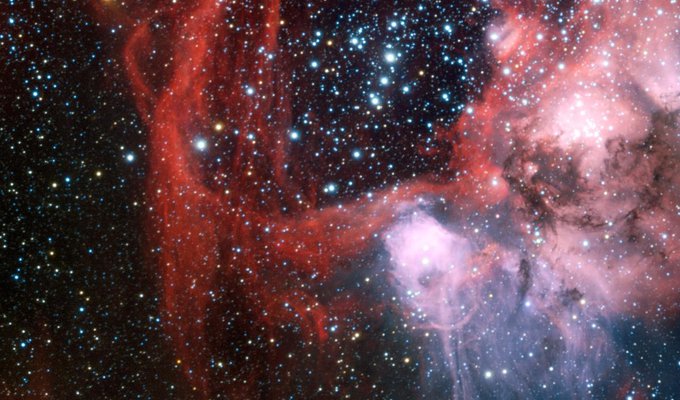The width of the Super-bubble is more than 60 times larger than the distance from the Sun to the next nearest star!

The Earth has lots of man-made satellites that orbit our planet. But it only has one natural satellite: the Moon. Our galaxy – the Milky Way – also has some natural satellites that orbit it. These satellites are called ‘dwarf galaxies’ because they are much smaller than normal galaxies like ours. Funnily, astronomers have named one of the dwarf galaxies that orbits our galaxy the Large Magellanic Cloud!
The Large Magellanic Cloud contains many regions where new stars are born. One of them is shown in this new image above. The image was taken with a telescope called the Very Large Telescope, which is based in a country in South America called Chile.
The star-making factory is found inside the red ring. (Click on the image to see the full ring.) This is a cloud of gas and dust, which is called a ‘Super-bubble’. The Super-bubble’s ring shape is due to a combination of destructive events. Fierce winds from massive stars and the explosions of dying stars have hollowed-out the centre of the cloud, leaving just a ring of gas and dust.
Yet, out of this chaos and destruction come new stars. The winds and explosions push gas and dust particles together around the edges of the Super-bubble. If enough gas and dust particles clump together in one region of the Super-bubble, a new star is created, as stars are just big balls of gas and dust! It’s the circle of life in the Universe: while some stars die, others are born.




















